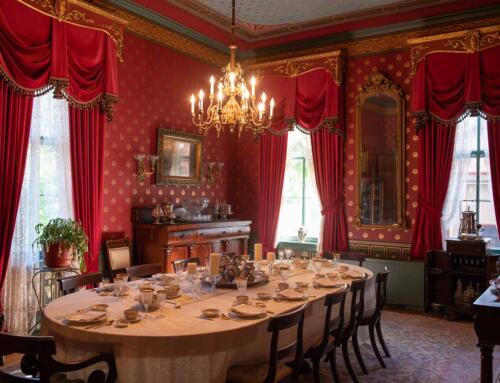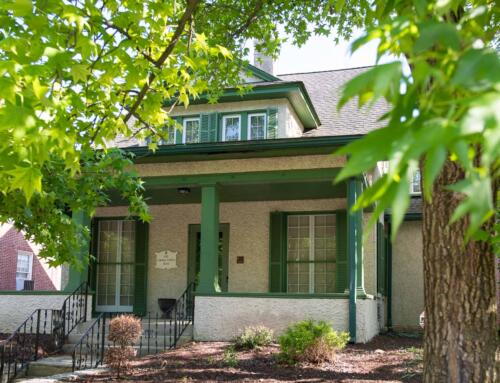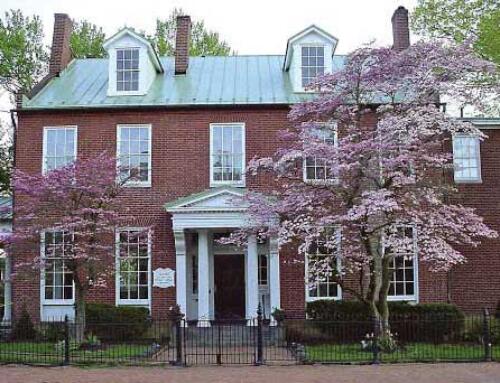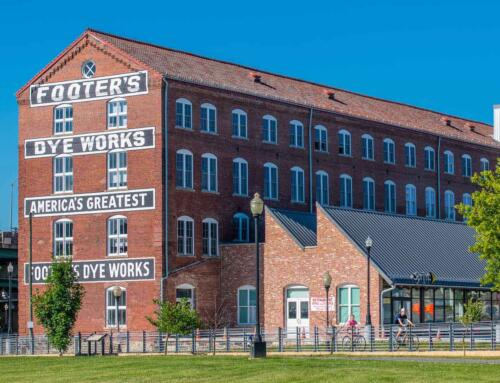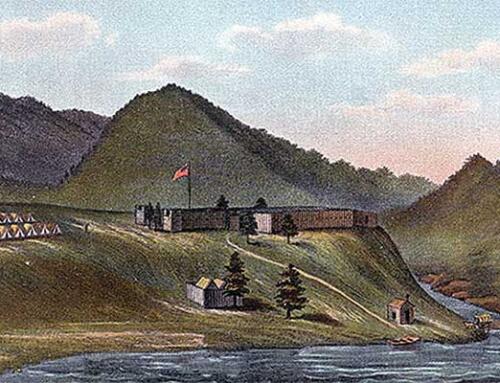The National Road
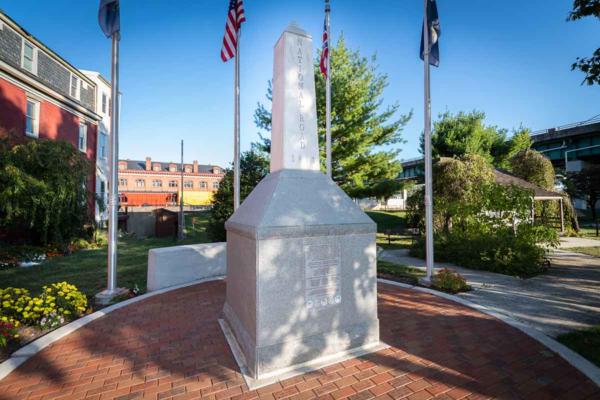
The National Road Monument was erected in 2012 at Riverside Park.
The Gateway to the West.
Known also as the ‘Cumberland Road,’ the National Road was the first federally funded road built in the United States. It was the main transport path for thousands of settlers and it played a key role in the westward expansion of a young nation.
Authorized by Thomas Jefferson, construction on the first National Road started in 1811. About 620 miles long, the National Road connected the Potomac River at Cumberland, Maryland to Wheeling, West Virginia, and then continued north west to Illinois. By 1926, the road was part of U.S. 40 as a coast-to-coast highway system.
A Monument, erected in 2012, commemorates the 200th anniversary of the National Road. Located at Riverside Park, it marks the start of the original route.
Also of note: Situated just outside the heritage area is The Toll Gate House. The state of Maryland took over the National Road in 1835, and they immediately erected toll gates. A seven-sided brick structure still stands at mile marker 1, in Lavale Maryland. It is listed on the National Register as the first gate erected along the National Road. The rates of toll are listed in cents per mile, and includes carts, chariots, chases, and carriages. Charges varied for sheep, hogs, mules, horses and cattle.
Today: To discover your own adventure, follow the Maryland Scenic Byways Historic National Road signs posted on local routes. Stop at landmarks or wayside exhibits to uncover stories about the people who built, traveled, lived, and worked along the National Road.
The National Road
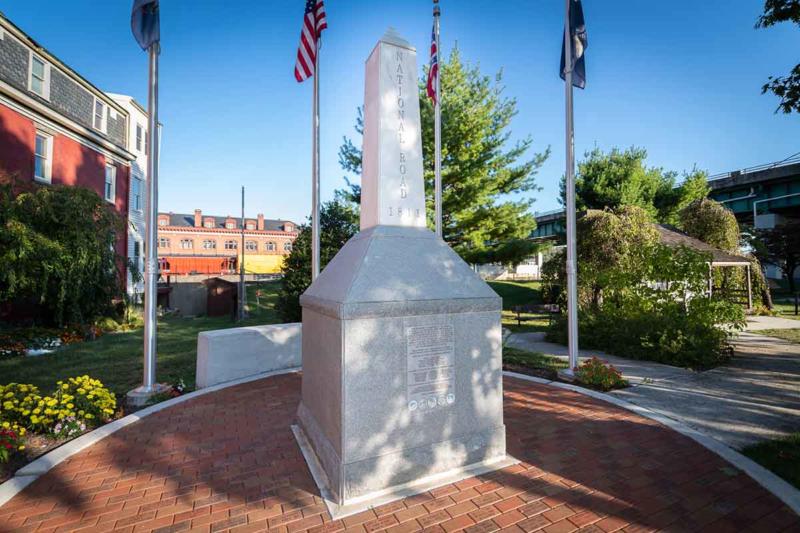
The National Road Monument was erected in 2012 at Riverside Park.
The Gateway to the West.
Known also as the ‘Cumberland Road,’ the National Road was the first federally funded road built in the United States. It was the main transport path for thousands of settlers and it played a key role in the westward expansion of a young nation.
Authorized by Thomas Jefferson, construction on the first National Road started in 1811. About 620 miles long, the National Road connected the Potomac River at Cumberland, Maryland to Wheeling, West Virginia, and then continued north west to Illinois. By 1926, the road was part of U.S. 40 as a coast-to-coast highway system.
A Monument, erected in 2012, commemorates the 200th anniversary of the National Road. Located at Riverside Park, it marks the start of the original route.
Also of note: Situated just outside the heritage area is The Toll Gate House. The state of Maryland took over the National Road in 1835, and they immediately erected toll gates. A seven-sided brick structure still stands at mile marker 1, in Lavale Maryland. It is listed on the National Register as the first gate erected along the National Road. The rates of toll are listed in cents per mile, and includes carts, chariots, chases, and carriages. Charges varied for sheep, hogs, mules, horses and cattle.
Today: To discover your own adventure, follow the Maryland Scenic Byways Historic National Road signs posted on local routes. Stop at landmarks or wayside exhibits to uncover stories about the people who built, traveled, lived, and worked along the National Road.



